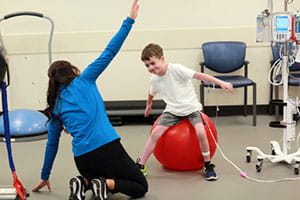Getting The Pre-Clinical Exercise Physiology - UW-La Crosse To Work
Exercise might exacerbate ketoacidosis by increasing ketone synthesis in action to increased distributing NEFA's. Type II diabetes is also intricately connected to weight problems, and there might be a connection in between type II diabetes and how fat is saved within pancreatic, muscle, and liver cells. Likely due to this connection, weight reduction from both workout and diet plan tends to increase insulin level of sensitivity in the majority of people.
Although nobody is technically cured of diabetes, individuals can live normal lives without the fear of diabetic complications; however, gain back of weight would surely result in diabetes signs and signs. Energetic exercise (such as exercise or hard labor) increases the body's demand for oxygen. The first-line physiologic reaction to this demand is an increase in heart rate, breathing rate, and depth of breathing.

More basically, oxygen intake is dictated by the amount of blood dispersed by the heart in addition to the working muscle's ability to take up the oxygen within that blood; however, this is a little bit of an oversimplification. Although Key Reference is believed to be the limiting aspect of this relationship in healthy individuals, it is not the only determinant of VO2 max.

Examine This Report on Definition - American Society of Exercise Physiologists
Numerous pathologies and anomalies cause conditions such as diffusion restriction, ventilation/perfusion inequality, and pulmonary shunts that can limit oxygenation of the blood and therefore oxygen distribution. In addition, the oxygen bring capacity of the blood is also an essential determinant of the equation. Oxygen bring capacity is often the target of exercise (ergogenic help) help utilized in endurance sports to increase the volume percentage of red blood cells (hematocrit), such as through blood doping or using erythropoietin (EPO).

Dehydration [edit] Dehydration refers both to hypohydration (dehydration caused prior to workout) and to exercise-induced dehydration (dehydration that develops during workout). The latter decreases aerobic endurance performance and leads to increased body temperature level, heart rate, viewed effort, and possibly increased reliance on carb as a fuel source. Although the unfavorable effects of exercise-induced dehydration on workout performance were plainly demonstrated in the 1940s, professional